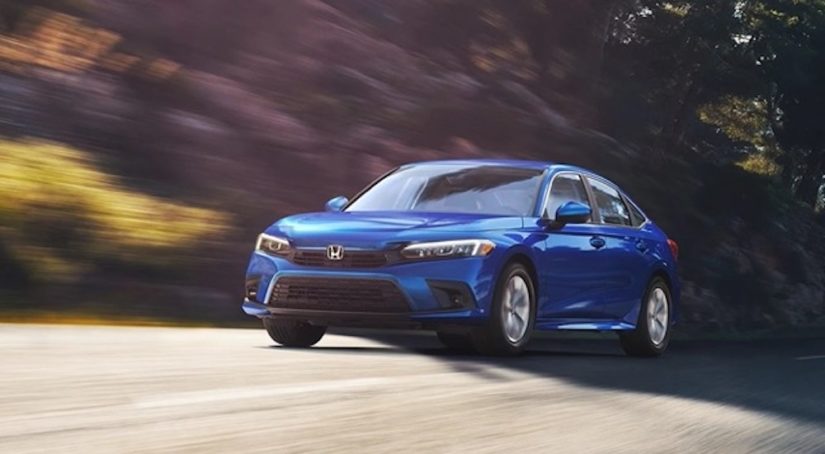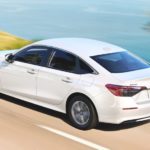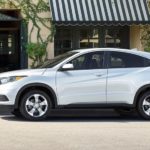What inspired your search for a “Honda dealer near me?” Are you a veteran of the brand or new to the lineup? Do you already have a model like the Accord, Civic, CR-V, or Ridgeline picked out? Whatever the case, you’ll find that Honda’s stellar reputation for building reliable vehicles is true whether you’re shopping off the new or used lot.
Along with this reputation for reliability, Honda is also renowned for its “Safety for Everyone” approach to vehicle design. Honda believes that every driver should be confident behind the wheel regardless of how far the journey or the driving condition. To engineer this confidence, Honda equips its models with active and passive safety features that extend your visibility and ensure your safety wherever the road leads.
As you shop for a Honda, you’ll discover many of these features are part of the Honda Sensing Suite, which debuted in 2015. So, what is it? Honda Sensing is an advanced group of safety features that actively minimize the potential for collision. But there’s much more to it than that! Here’s a closer look at the features and what makes the Honda lineup one of the safest in the industry.
Honda Sensing Suite
The Honda Sensing Suite debuted on the 2015 CR-V and introduced drivers to “sensor fusion” technology. The system relied on a radar mounted behind the CR-V’s grille and a camera at the top of the windshield to monitor the area in front of the vehicle. The system was innovative at the time and has consistently evolved with the advancement of radar, sensor, and camera technology. The latest iteration of the suite relies on a single camera and a lightning-fast processor that ensures a wider field of detection around the vehicle and more immediate alerts to give drivers ample time to respond.
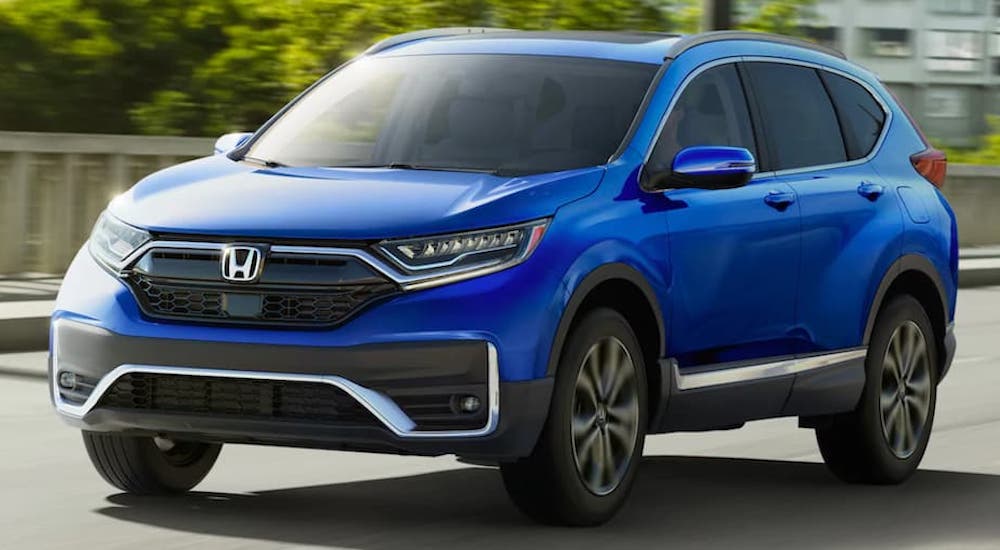
Collision Mitigation Braking System
The first tool in the Honda Sensing Suite is the Collision Mitigation Braking System. For example, let’s say that you’re driving through town at the speed limit when an oncoming car suddenly turns in front of you. Your Honda’s Collision Mitigation Braking System constantly monitors the roadway ahead and alerts you to the potential collision so that you have enough time to apply the brakes. If the crash is unavoidable or you fail to respond to the alert, the system can apply the brakes to minimize the impact or avoid the collision altogether.
Road Departure Mitigation System
Long highway drives can quickly become monotonous and cause you to lose your focus behind the wheel, leaving you to drift out of your lane. The rumble strips outside the travel lanes are the highway department’s attempt to alert you that you’re no longer in your lane. However, sometimes the rumble isn’t enough to get your attention. That’s where Honda’s Road Departure Mitigation System comes into play.
For example, you’re navigating your morning commute on the freeway when you change lanes without using your turn signal. The Road Departure Mitigation System will notify you that you’re drifting from your lane because you didn’t signal. Now, let’s say that you get distracted behind the wheel, and your Honda drifts from its lane into oncoming traffic. The system will alert you and can help you correct the issue by adjusting the steering wheel and applying the brakes to keep you safe in your lane.
Adaptive Cruise Control
Cruise control changed how we drive at higher speeds by eliminating the need to constantly hold our foot on the accelerator to maintain the vehicle’s speed. However, the feature had a lot of room for improvement since it needed to be constantly set and reset based on the flow of traffic. Thus, Adaptive Cruise Control was born.
Adaptive Cruise Control builds on traditional cruise control by monitoring the flow of traffic ahead. Then, taking your speed and the distance between the traffic ahead into account, the tool constantly adjusts your cruising speed. When the vehicle in front of you slows down, Adaptive Cruise Control slows your cruising speed and can maintain that speed as long as it’s safe. Or, you can simply change lanes and allow Adaptive Cruise Control to reaccelerate to the set cruising speed.
Lane Keeping Assist System
Honda’s Lane Keeping Assist System is like the Road Departure Mitigation System. Both features are designed to keep your Honda safe and on the road. However, the Lane Keeping Assist System is focused more on the position of your Honda in its lane. It uses a camera to detect lane lines and subtly adjusts your steering to keep the Honda centered in its lane, minimizing the potential for drifting into adjacent traffic.
Traffic Sign Recognition
You’re traveling in a new town and don’t remember seeing the last speed limit sign. The risk of getting a ticket isn’t one you’re willing to take. Fortunately, it’s not a risk you have to take with Honda’s Traffic Sign Recognition. The built-in tool uses a small camera to detect posted speed limit signs. Once a sign is detected, the tool alerts you to the speed limit via the driver information display behind the steering wheel.
Other Features
The Honda Sensing suite comes standard on every 2022 model in the lineup, but the safety features don’t stop there. Honda’s commitment to “Safety for Everyone” includes a long list of active safety tools that further extend your visibility. These tools range from the standard rearview camera to options like Honda LaneWatch, automatic high beams, and more. Here’s a closer look at those features and why they’re a must-have in your next Honda.
Honda LaneWatch
The Honda Sensing Suite does a great job of helping you keep your Honda centered in its lane and on the road. However, Honda raises the bar with additional features like Honda LaneWatch. The tool acknowledges that drivers have a larger blind spot on the passenger side of the vehicle, putting you at a greater risk for collisions. LaneWatch mitigates that risk once you switch on the right turn signal. This activates a camera on the passenger-side mirror that sends a live video stream to the center touchscreen display, giving you a wider and more expansive view better than any standard mirror.
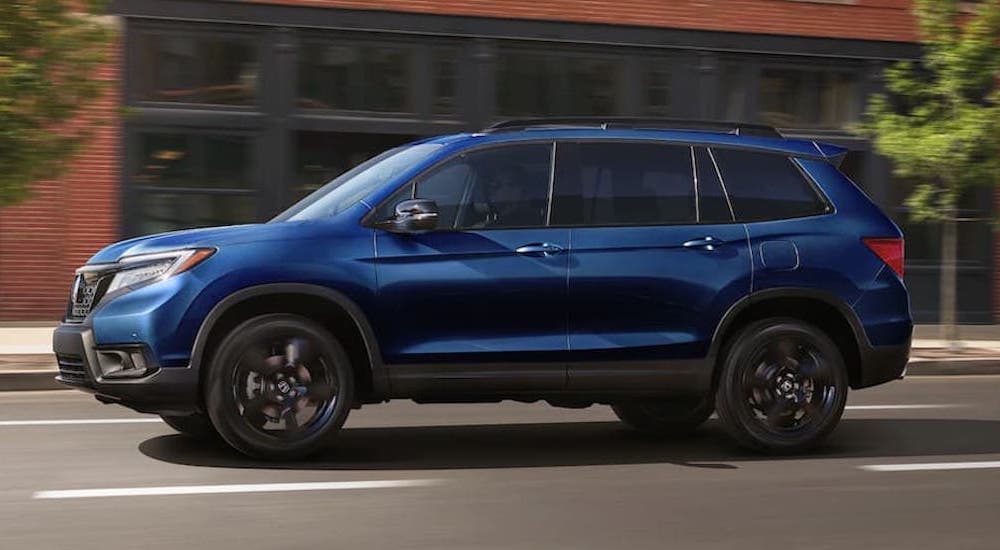
Blind Spot Information System
Changing lanes can be incredibly stressful when navigating a busy urban center or rush-hour traffic on the freeway. Honda’s Blind Spot Information System gives you the information you need to confidently change lanes by equipping your Honda with an extra set of eyes. The tool alerts you to vehicles in the adjacent lane using a visual and audible alert. The visual alert blinks until the area is clear or you switch off the turn signal.
Cross Traffic Monitor
How often do you check your rearview mirror and rearview camera before backing out of an area? Honda’s Cross Traffic Monitor gives you even more confidence when navigating your Honda in reverse by using the multi-angle rearview camera to alert you to traffic crossing behind your vehicle. The system uses a series of beeps and visual cues to notify you of vehicles or other obstacles, making it easy to back into a tight parking space or out of a congested area.
Auto High-Beam Headlights
Visibility is vital to your safety, which is why Honda equips its models with automatic high-beam headlamps. Traditional headlights require switching between the high and low beams according to your needs and oncoming traffic. Honda’s automatic headlights do the work for you when you’re driving above 25 mph at night. The lights automatically switch between low and high depending on the conditions.
Safety for Everyone, Guaranteed!
Shopping for a Honda is an easy decision when considering everything the lineup offers. Whether you’re shopping for a sedan like the Accord or Civic, a truck like the Ridgeline, or an SUV like the Passport or Pilot, you know what you’re getting–an exceptional vehicle that’s reliable, capable, and laden with modern technology and conveniences. The Honda Sensing Suite is icing on the cake, proving that the automaker makes your safety a priority anytime you get behind the wheel, and that’s impossible to put a price on.
